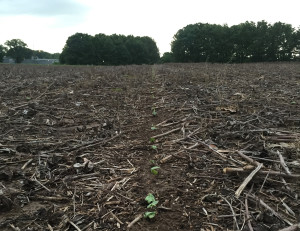COTTON, SOYBEAN AND CORN PLANTING CONTINUES
Producers, determined to beat forecasted rain showers, made the most of the 4.7 days suitable for field work last week. Cotton, soybean, and corn planting increased 16, 10, and 9 percent, respectively. Hit and miss showers across the State slowed hay cutting. Farmers that got rain are hoping there was enough to improve pasture conditions. Producer’s side-dressed corn as the weather allowed. Topsoil moisture was 2 percent very short, 13 percent short, 70 percent adequate and 15 percent surplus. Subsoil moisture levels were 2 percent very short, 12 percent short, 77 percent adequate, and 9 percent surplus. Continue reading at TN_05_09_16.


